India excursion report
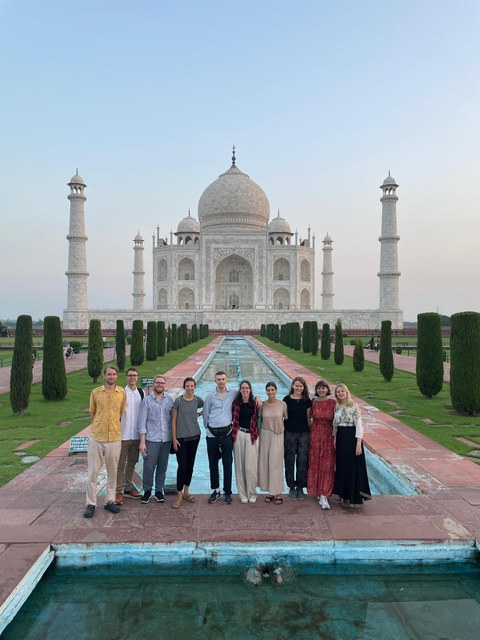
Taj Mahal
India excursion, organized by the Chair of Human Geography at TU Dresden
Sarah Ernst, Manuel Harms
From documentaries, travelogues and school lessons most people know: India is a country that fascinates, amazes and challenges. With almost 1.5 billion inhabitants, it is the most populous country in the world, has 23 official languages and is characterized by an almost unmanageable diversity of religions. The country challenges us to confront contrasts and invites us to reassess the realities of our own lives.
In September 2023, eight students and two lecturers from the TUD traveled to northern India to gain an insight, as comprehensive as possible, into the country from a human geographical and ethnological perspective.
In the course of the three-week excursion, we covered around 2200 km by day and night trains as well as countless, sometimes adventurous routes by auto rickshaw, cab, bus, subway and camel. The journey began in Delhi and took us via Rishikesh, Jodhpur, Jaipur and Agra to Varanasi.
At the respective travel destinations, a variety of student contributions enabled active engagement with current and historical topics of the subcontinent. Rishikesh, for example, invited students to explore the phenomenon of spiritual tourism, Jodhpur was examined for traces of colonialism and globalization, in Jaipur the focus was on an intensive examination of India's religious diversity, tourism in India was examined more closely using the example of the Taj Mahal and Varanasi offered insights into Hindu traditions relating to death and dying.
In addition, visits to various institutions, such as the Shiv Nadar University in Delhi and the Indian Institute of Crafts and Design (IICD) in Jaipur, offered the opportunity for contact and lively exchanges with locals. The IICD gave us interesting insights into traditional crafts, such as fabric production and dyeing, pottery and woodworking.
The visit to the Savda-Ghevra JJ Resettlement Colony on the north-western outskirts of Delhi was also particularly impressive. The district developed in 2006 when inner-city slums were resettled in preparation for the 2010 Commonwealth Games. Today, around 60,000 people from different caste, religious and geographical backgrounds live in Savda. The lively discussions with families, schoolchildren and students provided revealing insights into the realities of their lives.
All in all, the excursion highlighted the many facets and contradictions of the subcontinent. It quickly became clear that India refuses any kind of generalization. The country's contrasts can be observed on every street corner: Ox carts are parked in front of Starbucks outlets, the glittering modern metro line runs right past slums and children beg for alms in front of magnificent historical palaces. The trip provided us with very impressive and valuable insights into a country that fascinates, sometimes strains and often makes you think. It was therefore a great enrichment for all of our fellow travelers, both professionally and personally.
The excursion was generously sponsored by the Gesellschaft von Freunden und Förderern der TU Dresden e.V., for which we would like to express our sincere thanks!
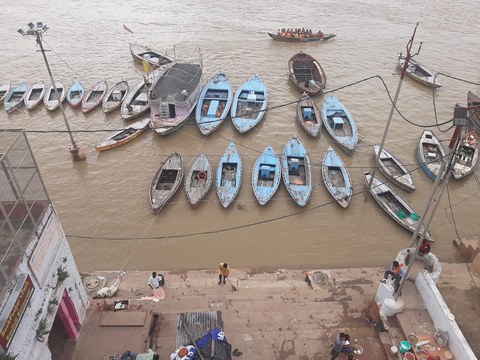
The holy river Ganges in Varanasi
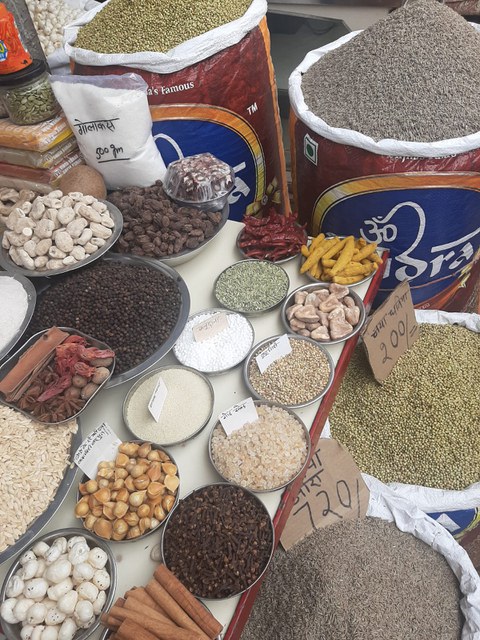
Spices in Old Delhi
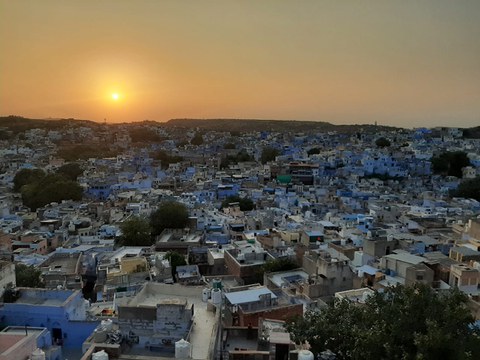
Sunset in Jhodpur
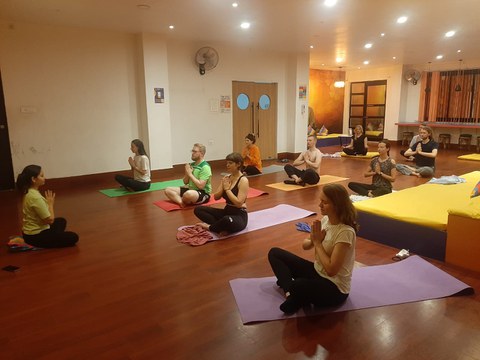
Yoga class in Rishikesh
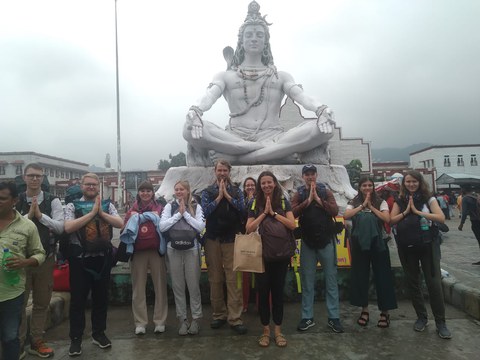
Together with the god Shiva in Haridwar